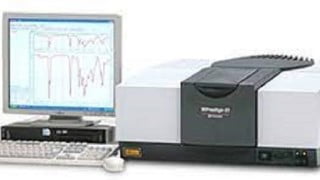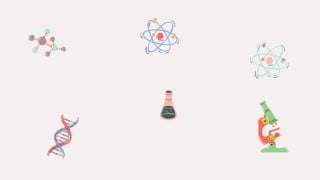Free Chemistry Tutorial – Infrared Spectroscopy : Principle & Instrumentation
Learn the theory and principles of IR spectroscopy in this comprehensive course. Perfect for engineering and science students, as well as those in the pharmacy field. Discover how to accurately determine compound purity using various analytical techniques. Explore the different types of vibration in molecules and their absorption of IR radiation. Gain insights into the instrumentation and application of IR spectroscopy. Start your journey towards mastering this essential technique today.
Most industries need the accurate determination of a compound purity even if present in trace amounts. This cannot be estimated by a conventional method, for this purpose various analytical techniques are used for the determination of compounds. Spectroscopy is one of the techniques used for the analysis of a compound at ppb or ppm-level. Absorption and Emission are the types of spectroscopy. Infrared spectroscopy is a type of absorbtion spectroscopy. IR spectroscopy (which is short for infrared spectroscopy) deals with the infrared region of the electromagnetic spectrum, i.e. light having a longer wavelength and a lower frequency than visible light. Infrared Spectroscopy generally refers to the analysis of the interaction of a molecule with infrared light.
The IR spectroscopy concept can generally be analyzed in three ways: by measuring reflection, emission, and absorption. The major use of infrared spectroscopy is to determine the functional groups of molecules, relevant to both organic and inorganic chemistry. An IR spectrum is a graph plotted with the infrared light absorbed on the Y-axis and frequency or wavelength on the X-axis.
IR Spectroscopy detects frequencies of infrared light that are absorbed by a molecule. Molecules tend to absorb these specific frequencies of light since they correspond to the frequency of the vibration of bonds in the molecule.
Infrared radiation (IR), also known as thermal radiation, is a band in the electromagnetic radiation spectrum with wavelengths above red visible light between 780 nm and 1 mm. This course covers the theory of Spectroscopy, Principle of IR Spectroscopy, Different types of vibration that occur in a molecule after absorbing IR radiation, the vibration of the diatomic and polyatomic molecule, criteria for a molecule to absorb IR radiation, Instrumentation of IR, Different parts of the IR spectrum, Application of IR spectroscopy.
Who this course is for:
- First & second year Engineering students
- Master of Science
- Bachelor of Science
- M Pharmacy
- B Pharmacy
User Reviews
Be the first to review “Free Chemistry Tutorial – Infrared Spectroscopy : Principle & Instrumentation”
You must be logged in to post a review.







There are no reviews yet.